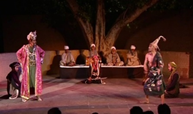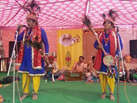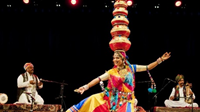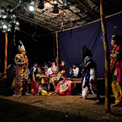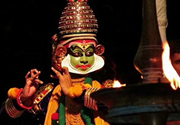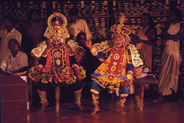

Context
The 50th All Manipur Shumang Leela Festival 2021-2022 kicked off at Iboyaima Shumang Leela Shanglen at Palace Compound in Imphal.
About
Shumang Leela:
|
Shumang' means 'open courtyard' and 'Leela' means to play. The literal meaning of Shumang Leela is "play of the open courtyard". |
- Shumang Leela is a traditional form of theatrein Manipur.
- The roles of female artists are all played by male actors and male characters are played by female artists in the case of female theatre groups.
- Shumang Leela started as a comic genrepresented before the kings and noblemen, which ultimately developed into the present form of courtyard-enacted play.
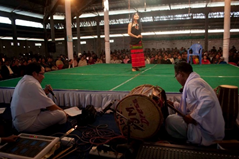
- Shumang Leela groups of those days attempted to preserve and promote humanism, tolerance, confidence, devotion, truth, and justice through their performances.
- Shumang Leela has, today, developed both theatrically and artistically.
- Shumang Leela has become a powerful medium for mass educationbesides giving entertainment and relaxation.
- It has also been trying to strengthen the bond of brotherhoodand friendship among various communities in the State.
- It has been trying to focus on the issues of moral values, unity, and integrity.
|
Some other traditional Theatre (Drama) in India |
|
|
Bhand Pather (Kashmir)
|
|
|
Swang (Haryana)
|
|
|
Nautanki (Uttar Pradesh) style="width: auto !important;"
|
|
|
Rasleela
|
|
|
Bhavai (Gujrat)
|
|
|
Jatra (West Bengal)
|
|
|
Maach (Madhya Pradesh) style="width: auto !important;"
|
|
|
Tamasha (Maharashtra)
|
|
|
Dashavatar (Konkan-Goa)
|
|
|
Krishanattam (Kerala)
|
|
|
Yakshagana (Karnataka)
|
|
|
Therukoottu (Tamil Nadu)
|
|
|
Karyala (Himachal Pradesh)
|
|
|
Bhaona (Ankia Naat) – Assam
|
|
